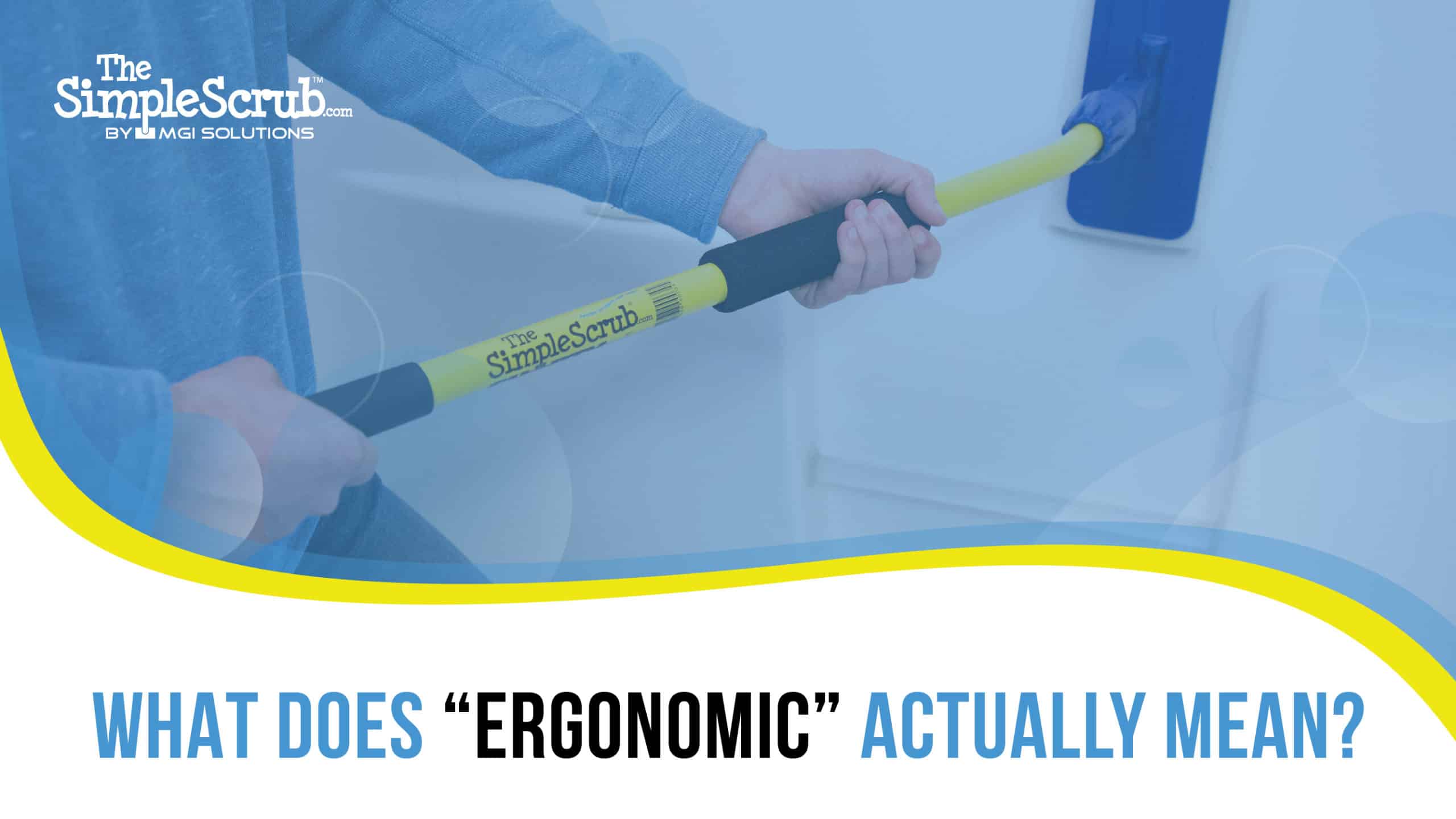
What Does “Ergonomic” Actually Mean?
Every day we interact with numerous objects and tools. Sometimes that’s an efficient, comfortable experience, and sometimes it’s, well, not. Ergonomics is an applied science that focuses on the design and arrangement of the things people use to maximize efficiency, safety, and comfort. At The Simple Scrub, we take pride in the ergonomic design of our products. Improving ergonomics in cleaning is our raison d’être. Because ergonomics play a role in all areas of our lives and consumption habits, we’d like to help better inform you about this science. Keep reading for a breakdown on what “ergonomic” actually means.
1. The History of Ergonomics
For centuries, doctors and healers noted a relationship between certain occupations and musculoskeletal injuries. While these associations moved people to develop better tools and methods, the term and dedicated study of “ergonomics” didn’t come about until 1857 when Polish scientist, inventor, and naturalist Wojciech Jastrzębowski coined the term in his treatise, Science of Work, Based on the Truths Taken From the Natural Science. The principles outlined in his book became increasingly valuable as the industrial revolution grew and business leaders looked for ways to boost productivity. After World War II, the focus of ergonomics began to shift to worker safety, technology and on the creation of better products, such as cleaning tools, for consumers.
2. The Principles of Ergonomics
The 5 main aspects of ergonomics are safety, comfort, ease of use, productivity/performance, and aesthetics. While each of these qualities is valuable in themselves, it is their combined application that results in successful ergonomic design. You may be asking yourself, “why aesthetics?” The answer is simple – when we find something visually engaging, we’re more likely to take pleasure in using it and are more likely to use it correctly. Additionally, the successful application of the other four aspects of ergonomics tends to lead naturally to aesthetic satisfaction, due to our innate and psychological connection to ergonomics.
3. The Benefits of Ergonomics
The benefits of ergonomics have been studied extensively across a variety of labor fields and consumer products. Ergonomic design results in fewer injuries and a decreased risk of musculoskeletal disorders. By improving the comfort and ease of use of a product or method, ergonomics improves psychological engagement, overall mood, health, and productivity. Ergonomic design enables people to complete tasks efficiently, leaving more time for life. The benefits of ergonomics can also be found in how long a product is able to last, the holistic approach to design resulting in more structural soundness and less strain applied by the user.
Clean Ergonomically with The Simple Scrub
Too many centuries of people have endured backbreaking pain, spending far too many uncomfortable hours attempting to clean their homes with the wrong cleaning tools. Through its ergonomic design, The Simple Scrub has made cleaning easier, safer, faster and more enjoyable. The long handle allows you to remain upright while you clean, lessening strain on your back and knees, and keeping you from coming face to face with cleaning products or icky corners. The slight curve at the base of The Simple Scrub applies better pressure without added exertion, and the comfortable grip fits naturally and gently in the hand. The Simple Scrub won’t bend or rust, making it a long-lasting all-purpose cleaning tool. With this design along with easy-to-change, reusable pads and our eco-friendly, all-purpose Simple Spray, you can quickly tackle your bathroom, kitchen, garage, patio, and just about anywhere else. Take advantage of the awesome power of ergonomics, and up your cleaning game today by visiting https://thesimplescrub.com/products/.
